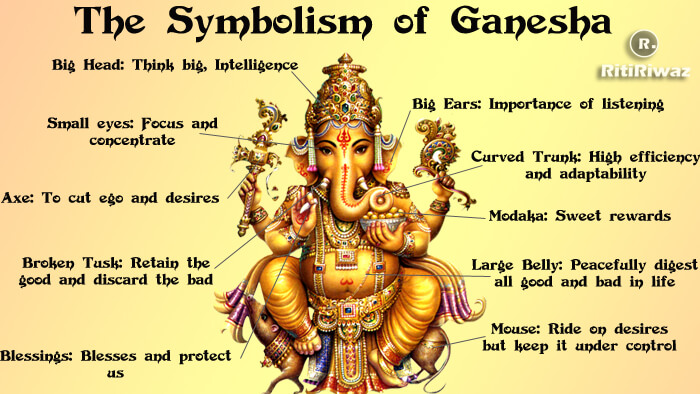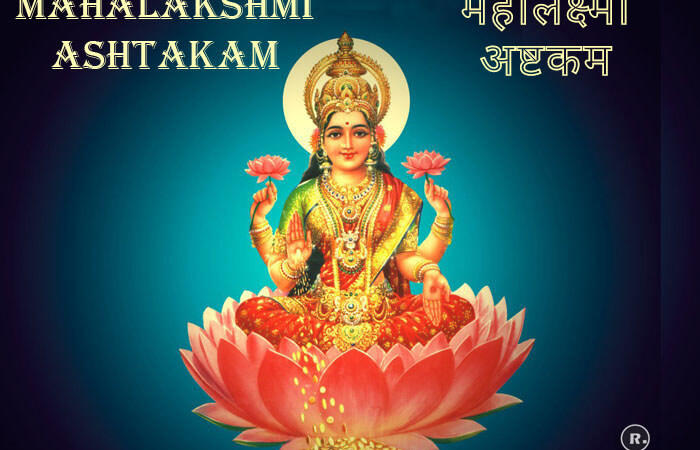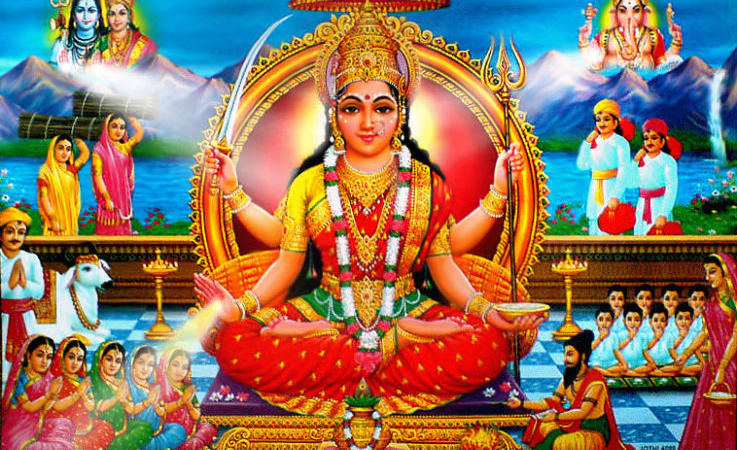Lord Ganesh – The Elephant headed God Symbolism and Meaning

Ganesh, also known as Ganapati, Vinayaka, Vighnaharta, Buddhipriya, Pillaiyar, and Ekadanta, is one of the most popular and loved Gods in Hindu culture. He is the elephant-headed god, and is easily the most recognizable and loveable of Hindu deities. He is the presiding deity of material wealth and the lord of spirituality. He removes all impediments for his devotees but creates all manner of difficulties for the transgressors, man or god.
Born as the son of Shiva the Destroyer and his consort Parvati, there are numerous stories in the Puranas (3rd – 16th Century AD), which tell different stories of Ganesh’s birth. While there are myths saying that Shiva’s spirit gave birth to Ganesh, in the Vamana Purana (450–900 AD) and Matsya Purana (250–500 AD), Ganesh is Parvati’s creation. Whereas, a completely different school of belief is the popular Vaishnavite belief that Ganesha is said to be Krishna’s incarnation.
Known for his elephant head, Ganesha’s many names all correspond to what he is known for. While the name Ganesha is used in North India, South India prefers to call him Ganapati, which means ‘Lord of the Hosts’ as he is the appointed head of Shiva’s regime of Ganas. His other names Ekadanta or Pillaiyar are derived from his appearance of having only one tusk (both Danta and Pella mean tooth and tusk), having removed one of his tusks to write the epic Mahabharata (400 BCE – 400 AD).
His other name Vignaharta is in reference to his Puranic title as the ‘Remover of Obstacles,’ although, originally, he was a malevolent deity known as Vignakarta as the ‘Lord of the Obstacles’ as he was appointed by the gods in the heavens to create hurdles for the people so that the heavens wouldn’t be overcrowded. Ganesha’s dual role of being the ‘Lord’ and ‘Remover’ of Obstacles shows the transformative nature of the deities’ different portrayals in different texts.
Additionally, Ganesha is also the God of Intellect and Wisdom, the Destroyer of Selfishness and Pride. It is said that he is the personification of the elemental universe in all of its different forms and figures. Since he is the ‘Lord of Beginnings’, every Hindu prayer and Tantric worship starts with a dedication to Ganesha, to please him into blessing and providing an easy path to glory.
Ganesha is the Lord of all Creatures, the Lord of Success, and the Lord of Education, Knowledge, and Wisdom. He has a rat as his vehicle, which, as the legend goes, was actually a demon that Ganesha defeated by stomping upon him and transforming him into a rat. A patron of Letters and the Arts, he is often depicted as a dancing figure, surrounded by musicians to please and entertain his parents. He is also associated with the first chakra, the Muladhara Chakra, representing preservation, survival, and health.
Suggested Read: The Elephant Deity Riding A Mouse
Every element of the body of Ganesha has its own value and its own significance:
-
The Bighead of Ganesh signifies intelligence and discriminative power and it means to think big, learn more, and use your intellect to your fullest potential.
-
The large ears of Ganesha signify wisdom and the importance of listening. Hear a lot of views, winnow out the unnecessary, and only then assimilate your ideas.
-
Small eyes signify concentration, and poor vision but see big, Surrender one’s pride and see beyond what you see to attain humility.
-
Broken Tusk signifies the idea that one must conquer emotions with wisdom and Ganesha’s ability to overcome all forms of dualism.
-
Curved Trunk signifies high efficiency and adaptability. Any task big or small must be done efficiently in life.
-
A large Belly signifies peacefully digesting all good and bad in life. A person should face all pleasant and unpleasant experiences in life with patience and calmness and have the stomach to keep secrets.
-
The four arms of Ganesha represent the four inner attributes of the subtle body, that is mind (Manas), intellect (Buddhi), ego (Ahamkara), and conditioned conscience (Chitta). Lord Ganesha represents the pure consciousness – the Atman – which enables these four attributes to function in us.
-
The hand waving an ax is a symbol of the retrenchment of all desires, bearers of pain and suffering. With this ax, Ganesha can both strike and repel obstacles. The ax is also to prod man to the path of righteousness and truth.
-
The second hand holds a whip, a symbol of the force that ties the devout person to the eternal beatitude of God. The whip conveys that worldly attachments and desires should be rid of.
-
The third hand turned towards the devotee, is in a pose of blessing, refuge, and protection (Abhaya).
-
The fourth hand holds a lotus flower (Padma), and it symbolizes the highest goal of human evolution, the sweetness of the realized inner self.
-
Lord Ganesha is usually portrayed wearing red and yellow clothes where red signifies the activity in the world and yellow symbolizes purity, peace, auspiciousness, sense of control, and truthfulness.
-
The mouse represents wisdom, talent, and intelligence. A mouse leads a clandestine life below the ground. Thus it is also a symbol of ignorance that is dominant in darkness and fears light and knowledge. The mouse is like the mantra which can cut through sheaths and sheaths of ignorance, leading to the ultimate knowledge.
-
Modaka signifies the reward of the sweetness of knowledge that will give the spiritual seeker joy, satisfaction, and contentment as he travels along the path of enlightenment.
-
The right foot dangling over the left foot signifies remaining grounded and constantly seeking one’s inner self, even while enjoying worldly pleasures.
-
Blessing signifies that the Lord always blesses us with intellect, refuge, and protection for those who are on the right path.
Suggested Read: Ganesh Chalisa
The symbolism behind Lord Ganesha’s form
-
‘Ga’ symbolizes Buddhi (intellect) and ‘Na’ symbolizes Vijnana (wisdom). Ganesha is thus considered the master of intellect and wisdom.
-
He is depicted as a big-bellied, yellow or red god with four arms and the head of a one-tusked elephant, riding on, or attended to by, a mouse. He is frequently represented sitting down, with one leg raised in the air and bent over the other. Typically, his name is prefixed with the Hindu title of respect, ‘Shree’ or Sri.
-
The cult of Ganesha is widely diffused, even outside of India. His devotees are called Ganapatya. The Ganapati festival is celebrated with great enthusiasm and devotion throughout India but in Mumbai, the financial capital of the country, the festival assumes a special significance because of the scale at which it is performed.
-
As is the case with every other external form with which Hinduism represents god, in the sense of the personal appearance of Brahman (also referred to as Ishvara, the Lord), the figure of Ganesha is an archetype loaded with multiple meanings and symbolism which expresses a state of perfection as well as the means of obtaining it.
-
Ganesha, in fact, is the symbol of he who has discovered the Divinity within himself. Ganesha is the first sound, OM, in which all hymns were born. When Shakti (Energy) and Shiva (Matter) meet, both Sound (Ganesha) and Light (Skanda) were born.
-
He represents the perfect equilibrium between force and kindness and between power and beauty. He also symbolizes the discriminative capacities which provide the ability to perceive distinctions between truth and illusion, the real and the unreal.
-
A description of all of the characteristics and attributes of Ganesha can be found in the Ganapati Upanishad (an Upanishad dedicated to Ganesha) of the rishi Atharva, in which Ganesha is identified with Brahman and Atman.
-
According to the strict rules of Hindu iconography, Ganesha figures with only two hands are taboo. Hence, Ganesha figures are most commonly seen with four hands which signify their divinity. Some figures may be seen with six, some with eight, some with ten, some with twelve, and some with fourteen hands, each hand carrying a symbol which differs from the symbols in other hands, there being about fifty-seven symbols in all, according to some scholars.
-
The image of Ganesha is a composite one. Four animals, a man, an elephant, a serpent, and a mouse have contributed to the makeup of his figure. All of them individually and collectively have deep symbolic significance.
The god of joy, happiness, and success, Ganesha has been blessing his devotees with prosperity and fortune since time immemorial. He’s thought to be the remover of obstacles, as he himself overcame lots of troubles.
Suggested Read: Ganesh Mantra
You never know what kind of assignment you are going to get the next time. The list of academic topics varies from your favorite movie to Ganesha symbolism. If you are assigned an essay but have no idea how to handle it, turn to a writing service for help. Professional writing companies e.g. Custom Writings, are available online to complete papers tailored to students’ needs. No need to break your head anymore.






